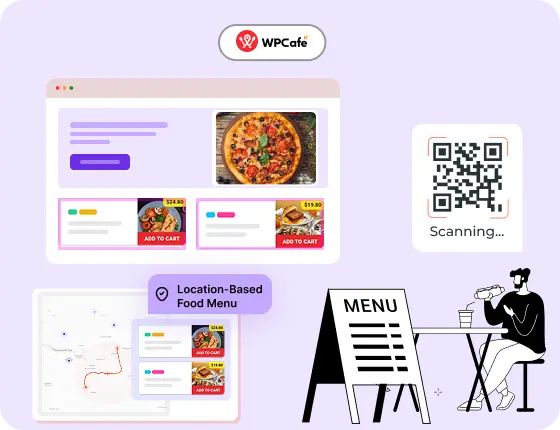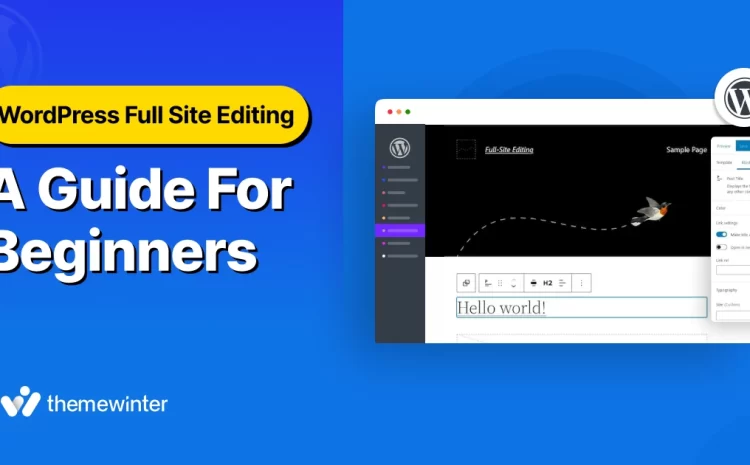50 Restaurant Survey Questions for Better Customer Feedback
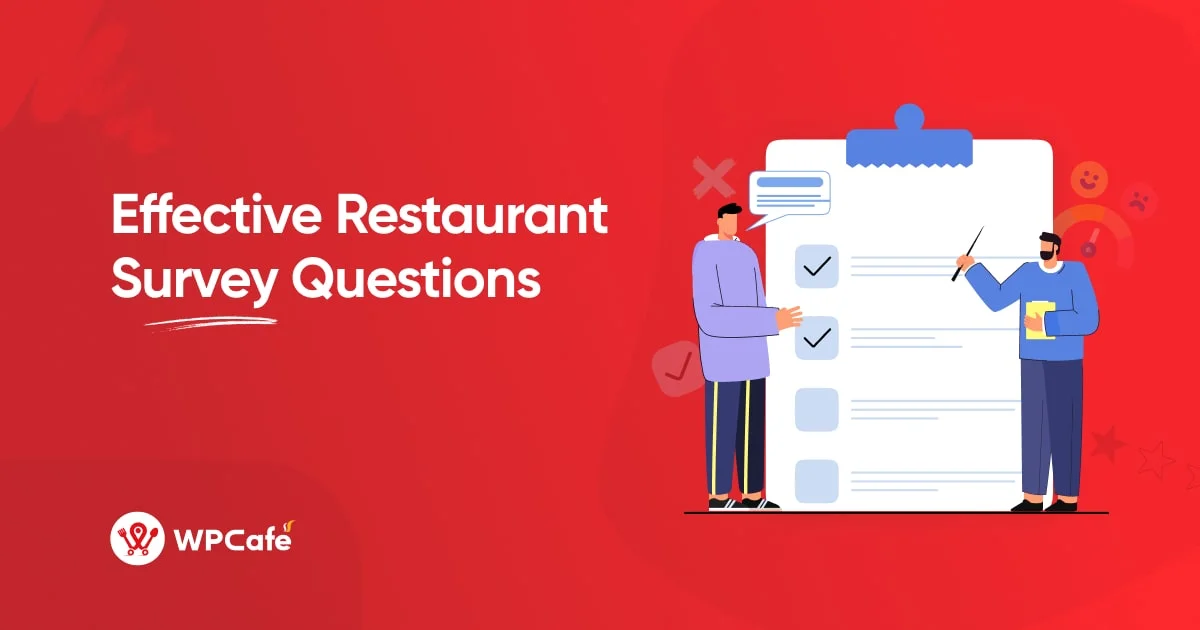
Table of Contents
Collecting honest feedback is one of the fastest ways for restaurants to improve service, increase customer loyalty, and boost sales. A well-designed restaurant customer satisfaction survey gives you direct insight into how diners feel about your food, service, and overall experience.
Whether you run a cozy café or a busy fine-dining spot, asking the right restaurant feedback questions can reveal what’s working — and what needs improvement.
In this guide, we’ll show you how to get customer feedback in a restaurant using 50 carefully crafted restaurant survey questions.
Each question is designed to help you measure satisfaction, spot trends, and make data-driven improvements that keep guests coming back.
🍽️ Quick Overview
A restaurant customer satisfaction survey is a simple way to gather clear feedback on food, service, ambiance, and value. This guide includes 50 ready-to-use restaurant survey questions, tips for effective survey design, and the best tools to run them.
- Measure and improve customer satisfaction
- Identify areas for improvement
- Boost loyalty and repeat visits
Why restaurant surveys matter for customer satisfaction?

Collecting feedback isn’t just a nice gesture — it’s a powerful tool for improving your restaurant’s performance and building loyalty. A well-structured restaurant customer satisfaction survey helps you:
- Understand what guests love (and what frustrates them)
- Track changes in satisfaction over time
- Make data-driven improvements to menu, service, and ambiance
- Strengthen customer relationships by showing you value their opinions
By using restaurant feedback questions that cover food quality, service speed, cleanliness, and value for money, you can spot trends, fix problems quickly, and keep guests coming back.
💡 Pro Tip for Restaurant Owners
A well-designed customer survey can reveal what guests love — but pairing it with strong SEO optimization for your restaurant website ensures those happy customers can find you online. Learn how to make your restaurant more visible in Google and attract more diners with proven SEO tips.
📖 Read the SEO Optimization Guide50 Restaurant Survey Questions to Improve Customer Experience
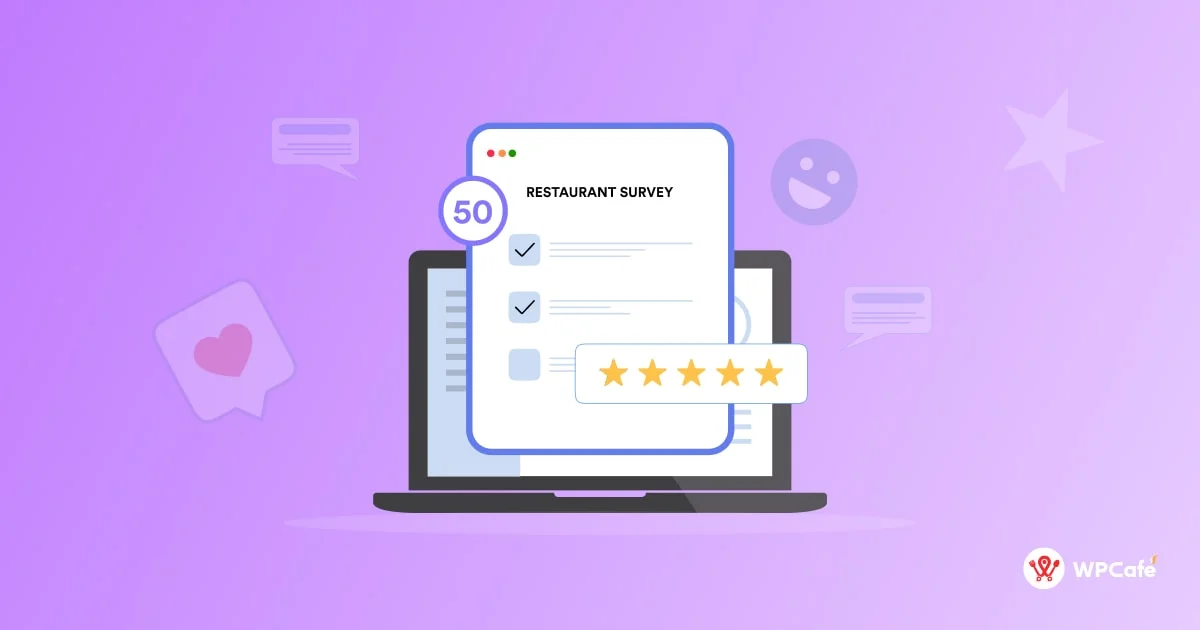
When creating a restaurant customer satisfaction survey, your questions should be clear, concise, and focused on gathering actionable feedback. Based on our research, we’ve organized 50 proven restaurant survey questions into five key categories: Food Quality, Service, Ambience, Value for Money, and Overall Experience.
Each question also includes the benefit it brings to your restaurant, helping you understand what’s working, what needs improvement, and how to keep guests coming back.
Food Quality Survey Question
- How would you rate the taste of your meal?
Benefit: Reveals satisfaction with flavor, helping improve or maintain food quality. - How would you rate the presentation of your meal?
Benefit: Measures visual appeal and encourages consistent plating standards. - Were your dietary preferences or restrictions accommodated?
Benefit: Ensures inclusivity and guest satisfaction for special needs. - How fresh did the ingredients taste?
Benefit: Monitors ingredient quality and freshness standards. - Was the temperature of your food appropriate when served?
Benefit: Evaluates kitchen timing and service efficiency. - How satisfied were you with the portion size?
Benefit: Balances portion control with customer expectations. - Were the flavors well-balanced and seasoned?
Benefit: Highlights culinary skill and attention to seasoning. - Did your meal meet your expectations based on the menu description?
Benefit: Ensures menu accuracy and avoids guest disappointment. - How would you rate the variety of menu options available?
Benefit: Checks menu diversity for different tastes and preferences. - Would you recommend our food to friends or family?
Benefit: Measures potential for referrals and word-of-mouth marketing.
Service-Related Survey Question
- How would you rate the friendliness of the staff?
Benefit: Evaluates the customer service attitude of the staff.
- How promptly were you greeted upon arrival?
Benefit: Assesses efficiency and initial customer engagement.
- How knowledgeable was the staff about the menu?
Benefit: Ensures staff are well-trained and can make recommendations.
- How would you rate the speed of service?
Benefit: Identifies potential issues in service speed and efficiency.
- Were your special requests or needs handled effectively?
Benefit: Measures staff’s ability to manage customer requests.
- How would you rate the attentiveness of the service throughout your meal?
Benefit: Ensures consistent service and attentiveness.
- Did the server check back with you at appropriate intervals?
Benefit: Balances attentiveness without being intrusive.
- How would you rate the professionalism of the staff?
Benefit: Ensures staff maintain a professional demeanor.
- Did the staff make you feel valued as a customer?
Benefit: Assesses the personal connection and customer care.
- Were there any issues with your service? If so, please describe.
Benefit: Identifies specific service problems that need addressing.
Ambiance-Related Survey Question
- How would you rate the cleanliness of the restaurant?
Benefit: Maintains hygiene and positive impressions. - How comfortable was the seating?
Benefit: Impacts dining comfort and length of stay. - How would you describe the noise level?
Benefit: Helps balance lively atmosphere vs. quiet dining needs. - How would you rate the lighting?
Benefit: Ensures comfort and sets the right mood. - How appealing is the décor and design?
Benefit: Enhances overall brand image and guest experience. - Was the restaurant temperature comfortable?
Benefit: Checks HVAC and climate control for comfort. - How appealing was the music selection?
Benefit: Fine-tunes ambiance for target audience preferences. - How clean were the restrooms?
Benefit: Maintains hygiene standards throughout the venue. - Was there enough space between tables for privacy?
Benefit: Increases comfort and guest satisfaction. - How would you rate the overall atmosphere?
Benefit: Summarizes the impact of ambiance on the dining experience.
Value-for-Money Survey Questions
- How would you rate the value for money of your meal?
Benefit: Balances pricing and quality perceptions. - Were portion sizes fair for the price?
Benefit: Ensures guests feel they get what they pay for. - Were any items overpriced in your opinion?
Benefit: Identifies pricing concerns for adjustments. - How would you rate ingredient quality considering the price?
Benefit: Confirms whether premium pricing is justified. - How do our prices compare to similar restaurants?
Benefit: Benchmarks against local competitors. - Were there any hidden costs or unexpected charges?
Benefit: Ensures pricing transparency. - How would you rate your overall experience for the price paid?
Benefit: Connects value perception with repeat business potential. - How often do you dine at restaurants in this price range?
Benefit: Helps with positioning and target audience strategy. - Did you find our promotions or discounts valuable?
Benefit: Measures marketing campaign effectiveness. - Would you dine with us again based on value for money? Benefit: Predicts loyalty tied to pricing satisfaction.
🧐 30+ Perfect Appointment Email Templates You Should Use | Read more
Overall ( Experience)Survey Questions for Restaurant
- How satisfied were you with your overall dining experience?
Benefit: Provides a high-level satisfaction benchmark. - How likely are you to dine with us again?
Benefit: Predicts repeat visits and loyalty. - How likely are you to recommend us to others?
Benefit: Gauges potential for organic growth via referrals. - Were your expectations met during your visit?
Benefit: Confirms delivery on promises. - Did any part of your experience stand out as exceptional?
Benefit: Identifies strengths to maintain. - Was there anything that disappointed you?
Benefit: Points out issues for quick resolution. - How would you rate the ease of making a reservation?
Benefit: Checks booking process efficiency. - How satisfied were you with the wait time for your table?
Benefit: Evaluates seating and flow management. - How easy was it to find our restaurant?
Benefit: Assesses location visibility and accessibility. - Do you have any additional comments or suggestions?
Benefit: Allows open-ended feedback for deeper insights.

How to structure restaurant survey questions for better customer feedback
A well-structured restaurant customer satisfaction survey isn’t just about the number of questions — it’s about asking them in the right way. Each question should be clear, concise, and targeted to one specific aspect of the dining experience, such as food quality, service speed, ambiance, or value for money.
For the best results:
- Mix question types: Use both open-ended questions (for detailed, qualitative feedback) and closed-ended questions (for easy, quantitative analysis).
- Add rating scales: Include numerical scales (e.g., 1–5 or 1–10) to measure satisfaction levels consistently.
- Include multiple-choice options: These help identify patterns quickly, especially for service or menu-related preferences.
- Stay specific: Avoid vague or double-barreled questions to ensure accurate, actionable responses.
Example of a well-formatted survey question:
- Question: How would you rate the taste of your meal?
- Scale: 1 (Very Poor) – 5 (Excellent)
- Benefit: Measures guest satisfaction with flavor, helping you maintain or improve food quality.
When designing your restaurant survey:
- Keep it balanced with a variety of question types.
- Ensure coverage of all core areas — food quality, service, ambiance, value for money, and overall experience.
- Keep it short enough to complete in under 3 minutes to avoid survey fatigue.
This approach ensures you capture comprehensive, actionable feedback that can guide improvements, increase customer satisfaction, and encourage repeat visits.
Don’t Ask This Kind of Question in a Restaurant Survey

Avoiding these types of questions, you can create a more effective and user-friendly restaurant survey that yields valuable, actionable feedback. Instead, focus on clear, concise, and neutral questions that encourage honest and thoughtful responses.
Leading questions
- Example: “Don’t you think our food is amazing?”
- Why to Avoid: Leading questions bias the respondent’s answer, pushing them towards a particular response rather than getting their true opinion.
Loaded questions
- Example: “How much did you dislike our new menu?”
- Why to Avoid: These questions assume a negative stance, which can frustrate respondents and lead to unreliable feedback.
Double-barreled questions
- Example: “How would you rate the taste and presentation of your meal?”
- Why to Avoid: Double-barreled questions ask about two different things at once, making it difficult to determine which aspect the respondent is addressing.
Too Personal Questions
- Example: “What is your annual income?”
- Why to Avoid: These questions can make respondents uncomfortable and may be seen as intrusive or irrelevant to their dining experience.
🧐 Wp Amelia vs. BookingPress vs. Bookly vs. Timetics WP: Battle Among the Best WordPress Appointment Booking Plugins | Read more
Overly Complex Questions
- Example: “How would you describe the balance of flavors in terms of acidity, sweetness, saltiness, and bitterness in your main course?”
- Why to Avoid: Complex questions can confuse respondents and result in unclear or incomplete answers.
Ambiguous Questions
- Example: “How did you find the service?”
- Why to Avoid: Ambiguous questions lack specificity, making it hard to understand what aspect of the service the respondent is referring to.
Long and Detailed Questions
- Example: “Can you describe in detail your entire dining experience from the moment you entered until you left?”
- Why to Avoid: Long questions can overwhelm respondents, leading to survey fatigue and potentially incomplete or rushed responses.
Yes/No Questions Without Follow-Up
- Example: “Did you enjoy your meal?” (without asking why or why not)
- Why to Avoid: Yes/no questions provide limited insight and do not explain the reasoning behind the respondent’s answer.
Hypothetical Questions
- Example: “If we changed our menu entirely, how would you feel?”
- Why to Avoid: Hypothetical questions often lead to speculative answers that may not provide actionable insights.
Questions with Assumptions
- Example: “What did you think of our extensive wine list?” (assuming the respondent looked at the wine list)
- Why to Avoid: Questions that assume a certain behavior or experience can alienate respondents who did not have that experience.
Redundant Questions
- Example: “How was your meal?” and “Did you like your food?”
- Why to Avoid: Redundant questions can irritate respondents and waste their time, leading to survey abandonment.
Overly Negative Questions
- Example: “What did you hate about your dining experience?”
- Why to Avoid: Overly negative questions can make the survey feel like a complaint session, which may not be constructive or balanced.

What are the best online survey tools for restaurant surveys?
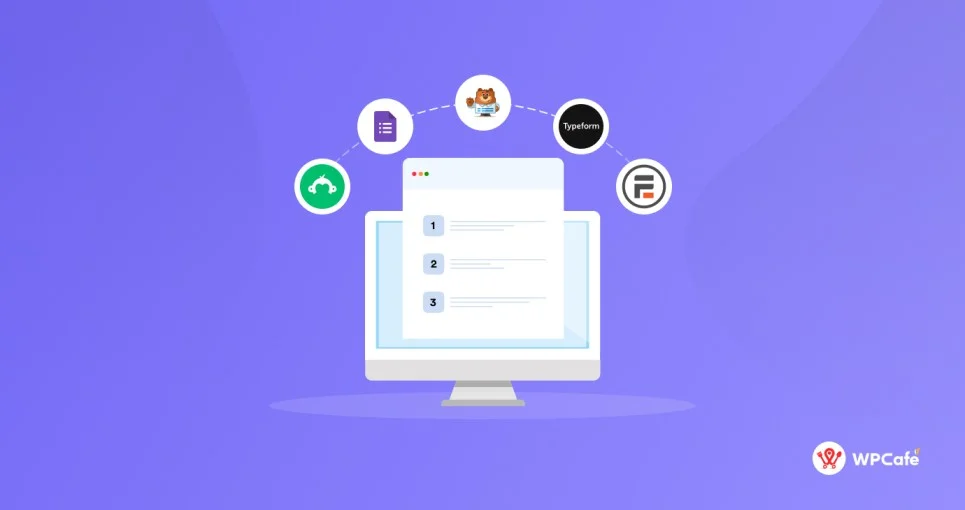
The best tools for creating restaurant customer satisfaction surveys are SurveyMonkey, Google Forms, and Typeform for general use, and WPForms, Formidable Forms, and Gravity Forms if you’re running a WordPress restaurant website.
These platforms offer customizable templates, rating scales, and analytics features that make it easy to collect, analyze, and act on guest feedback.
Let’s get a sneak peek at the key features of these tools:
Online survey tools
SurveyMonkey: Known for its user-friendly interface and robust features.
Key features:
- Customizable templates tailored for the hospitality industry.
- Advanced analytics to interpret survey results.
- Integration with various apps and platforms.
- Multiple question types (e.g., multiple choice, open-ended).
Google Forms: Free and simple-to-use restaurant survey form that integrates seamlessly with other Google services.
Key features:
- Unlimited surveys and responses.
- Real-time response tracking.
- Integration with Google Sheets for data analysis.
- Easy sharing via email or link.
Typeform: Stands out with its interactive and visually appealing survey designs.
Key features:
- Conversational forms that enhance respondent engagement.
- Customizable themes and templates.
- Logic jumps for personalized survey paths.
- Integration with various third-party apps.
WordPress plugins for surveys
WPForms: A Popular WordPress plugin known for its drag-and-drop form builder.
Key features:
- Pre-built survey form templates.
- Conditional logic for creating dynamic surveys.
- Real-time survey results.
- Integration with email marketing services.
Formidable Forms: Powerful WordPress form builder with advanced features.
Key features:
- Drag-and-drop form builder with survey-specific templates.
- Advanced calculation fields for complex surveys.
- Conditional logic and branching.
- Visualization of survey results with graphs and charts.
Gravity Forms: Another robust WordPress form plugin suitable for creating detailed surveys.
Key features:
- Advanced form fields and conditional logic.
- Easy-to-use drag-and-drop interface.
- Integration with various third-party services.
- Survey-specific add-ons for enhanced functionality.
Customer acquisition using feedback surveys
Turning customer feedback into a growth engine starts with a structured approach. Here’s how restaurants can use survey results to attract and retain more guests:

- Analyze the data – Identify trends, common complaints, and recurring positive themes in your responses.
- Spot improvement areas – Pinpoint what’s underperforming, whether it’s menu items, service speed, or ambiance.
- Implement changes – Use the insights to update your menu, train staff, adjust pricing, or improve the dining experience.
- Close the loop with respondents – Thank guests for their input and tell them what improvements you’ve made based on their feedback.
- Promote the improvements – Share the changes on your website, social media, and email newsletters, highlighting that they came directly from customer suggestions.
- Leverage testimonials – Use positive survey comments as social proof in marketing campaigns.
- Offer incentives – Encourage trial and repeat visits with special offers, discounts, or loyalty rewards.
- Measure the impact – Track key metrics like repeat visit rates, online reviews, and Net Promoter Score (NPS) to see if the changes are increasing customer acquisition.
Pro Tip: When guests see that you actively listen and act on their feedback, they’re more likely to return and recommend your restaurant to others.
Final thoughts: turning restaurant feedback into customer loyalty
A well-designed restaurant customer satisfaction survey with relevant, targeted questions is one of the most effective tools for measuring guest loyalty and improving the dining experience. But collecting feedback is only the first step — acting on it is what turns satisfied customers into loyal patrons.
When guests see that their opinions lead to fundamental changes — whether it’s menu updates, improved service, or better ambiance — they feel valued. They are more likely to return and recommend your restaurant to others.
Beyond surveys, success also depends on optimizing your restaurant SEO, refining your management processes, and implementing innovative marketing strategies. We regularly publish actionable guides to help restaurants grow, attract more customers, and increase revenue.
📩 Stay updated: [Subscribe to our blog] to get the latest tips, tools, and strategies for restaurant success.
💬 Join the conversation: Connect with other restaurant owners and marketers in our [Facebook community].
🍽️ Get WP Cafe Today
Power up your restaurant website with WP Cafe — the all-in-one solution for online food ordering, menu management, and reservations. Designed for WordPress, it’s packed with features to boost sales and improve the dining experience.
🚀 Get WP Cafe Now